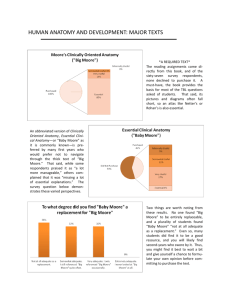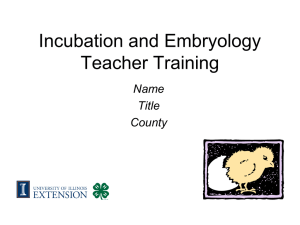Paper 0607 Animal Body 1 Issues
advertisement
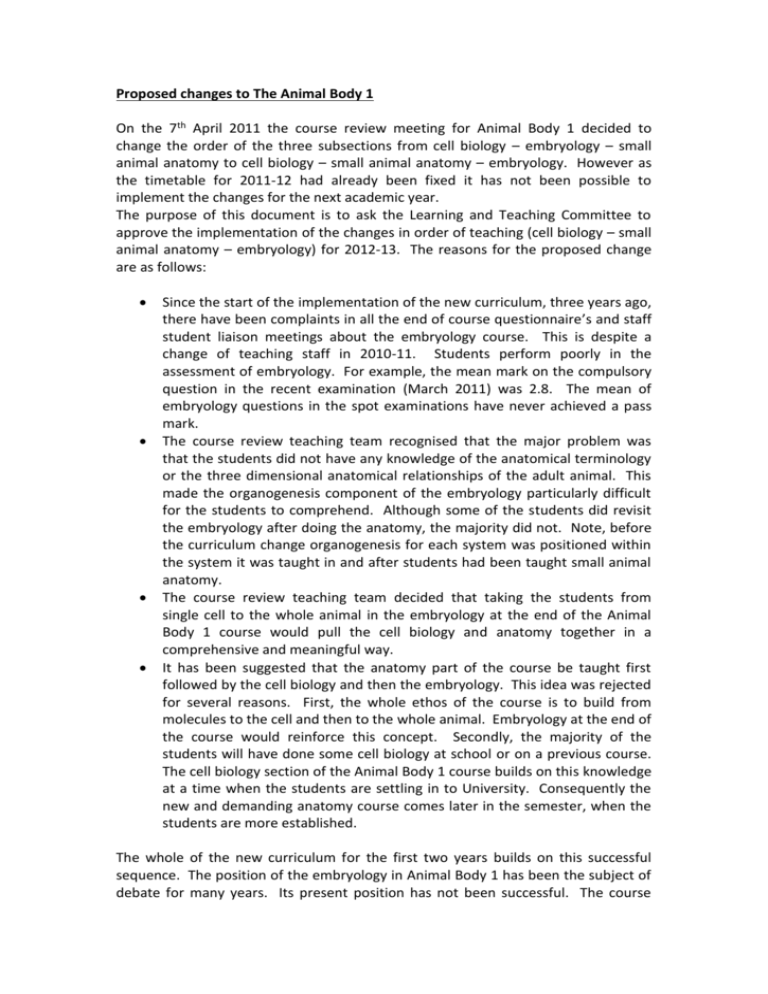
Proposed changes to The Animal Body 1 On the 7th April 2011 the course review meeting for Animal Body 1 decided to change the order of the three subsections from cell biology – embryology – small animal anatomy to cell biology – small animal anatomy – embryology. However as the timetable for 2011-12 had already been fixed it has not been possible to implement the changes for the next academic year. The purpose of this document is to ask the Learning and Teaching Committee to approve the implementation of the changes in order of teaching (cell biology – small animal anatomy – embryology) for 2012-13. The reasons for the proposed change are as follows: Since the start of the implementation of the new curriculum, three years ago, there have been complaints in all the end of course questionnaire’s and staff student liaison meetings about the embryology course. This is despite a change of teaching staff in 2010-11. Students perform poorly in the assessment of embryology. For example, the mean mark on the compulsory question in the recent examination (March 2011) was 2.8. The mean of embryology questions in the spot examinations have never achieved a pass mark. The course review teaching team recognised that the major problem was that the students did not have any knowledge of the anatomical terminology or the three dimensional anatomical relationships of the adult animal. This made the organogenesis component of the embryology particularly difficult for the students to comprehend. Although some of the students did revisit the embryology after doing the anatomy, the majority did not. Note, before the curriculum change organogenesis for each system was positioned within the system it was taught in and after students had been taught small animal anatomy. The course review teaching team decided that taking the students from single cell to the whole animal in the embryology at the end of the Animal Body 1 course would pull the cell biology and anatomy together in a comprehensive and meaningful way. It has been suggested that the anatomy part of the course be taught first followed by the cell biology and then the embryology. This idea was rejected for several reasons. First, the whole ethos of the course is to build from molecules to the cell and then to the whole animal. Embryology at the end of the course would reinforce this concept. Secondly, the majority of the students will have done some cell biology at school or on a previous course. The cell biology section of the Animal Body 1 course builds on this knowledge at a time when the students are settling in to University. Consequently the new and demanding anatomy course comes later in the semester, when the students are more established. The whole of the new curriculum for the first two years builds on this successful sequence. The position of the embryology in Animal Body 1 has been the subject of debate for many years. Its present position has not been successful. The course review meeting decided the alternative position in the sequence was now pertinent and should be given a chance. We seek the teaching committee’s approval for this change. Dr Sue Kempson Course Organiser The Animal Body 1
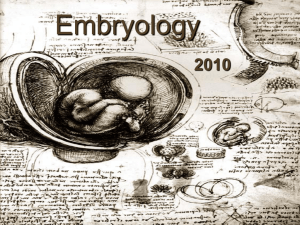
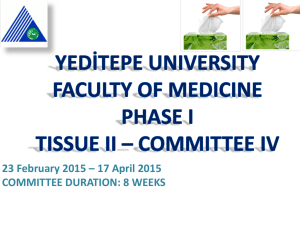
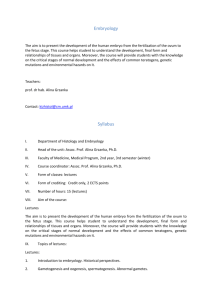

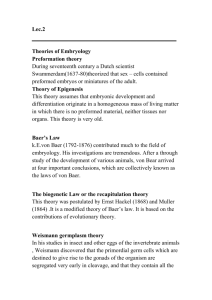
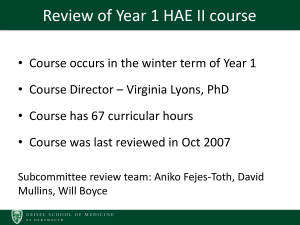
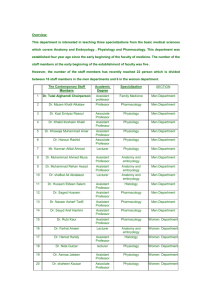
![Evidences_for_Evolution[1]](http://s2.studylib.net/store/data/005782474_2-92d918c9fbb15c5c4fb484555d2a0a0a-300x300.png)
